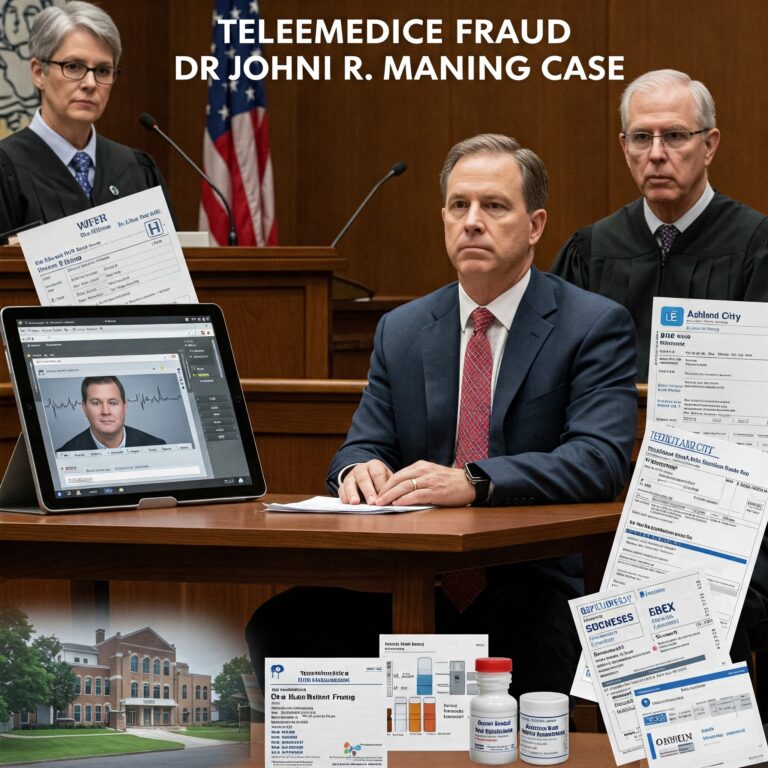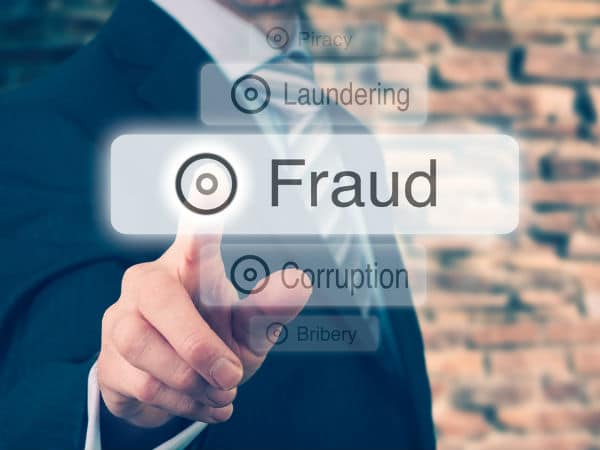Decade of Deceit: Bookkeeper’s $1.4M Embezzlement Scheme Leads to Federal Prison – A Case Study in Fraud, Identity Theft, and Business Protection
Introduction
In a stark reminder of the vulnerabilities businesses face from within, Valerie Joseph, 61, of Murrells Inlet, South Carolina, was recently sentenced to 53 months in federal prison, followed by 12 months of home detention. Her conviction stemmed from a meticulously executed embezzlement scheme spanning over a decade, during which she and her husband siphoned approximately $1.4 million from her long-term employer. U.S. District Judge Stephanie A. Gallagher presided over the sentencing in Baltimore, Maryland, also ordering Joseph to pay $1.4 million in restitution to the victims. The charges included conspiracy to commit wire fraud and aggravated identity theft, reflecting the complex nature of the crime [User Query].
The key figures in this case are Valerie Joseph, who served as a bookkeeper for the victim business from 2003 until August 2021, and her husband, Robin Joseph, who pleaded guilty to the same federal charges on April 25, 2025, and awaits sentencing [User Query]. The victims were identified as “Victim Business 1,” a wholesale greenhouse and garden center located in Caroline County, Maryland, and its owner, “Victim K.F.” [User Query]. The successful investigation and prosecution involved the collaborative efforts of the Federal Bureau of Investigation (FBI) – Baltimore Field Office, led by Special Agent in Charge William DelBagno, and the U.S. Attorney’s Office for the District of Maryland, represented by U.S. Attorney Kelly O. Hayes and prosecuted by Assistant U.S. Attorney Paul Riley [User Query].
This report delves into the specifics of the Joseph case, analyzing it as a critical example of sophisticated, long-term employee fraud. It will dissect the methods employed by the Josephs, examine the federal laws they violated, explore the devastating impact such a scheme can have on a small business, underscore the vital role of internal controls in prevention, detail the federal response mechanism for white-collar crime, and discuss the factors influencing federal sentencing. The case serves not only as a cautionary tale but also as an instructive guide for businesses seeking to understand and mitigate the significant risks posed by internal fraud. The fact that the scheme was perpetrated by a long-term, presumably trusted employee underscores a critical vulnerability: the very familiarity and trust built over years can inadvertently foster complacency in financial oversight, creating fertile ground for minor deceptions to escalate into catastrophic losses. Trust, while essential in business relationships, cannot substitute for robust verification processes, especially in roles with financial access.
Anatomy of a Decade-Long Deception: Unpacking the $1.4 Million Scheme
The conspiracy orchestrated by Valerie and Robin Joseph was not a fleeting lapse in judgment but a sustained campaign of fraud against Victim Business 1 and Victim K.F. Court documents establish that the scheme began, at the latest, in January 2011 and continued unabated until August 2021, spanning more than ten years [User Query]. This extended duration highlights a significant failure in detection, allowing the financial damage to accumulate to a staggering $1.4 million.
The core methodology employed was the systematic abuse of credit card accounts associated with the victim business and its owner. Valerie Joseph, leveraging her position as bookkeeper, along with her husband Robin, made numerous unauthorized charges for personal gain across three specific accounts: an American Express card, a Capital One card, and a Lowes/Synchrony financial account, all linked to the victims [User Query].
The sheer scale and breadth of the fraudulent spending paint a picture of embezzled funds becoming completely intertwined with the Josephs’ personal lifestyle. The unauthorized charges were not limited to luxury goods but covered a vast range of personal expenses, demonstrating a routine reliance on the stolen money. Specific examples documented in court filings include [User Query]:
- Over $200,000 charged at Walmart.
- More than $53,000 paid to AT&T for personal phone bills.
- Over $30,000 spent at a Japanese steak and seafood restaurant.
- More than $116,000 processed through PayPal for various personal expenditures.
- Over $90,000 paid to Easton Utilities for their home utility bills.
- More than $16,000 used for tuition payments at Chesapeake College.
- Approximately $2,500 paid for college expenses at the University of Hawaii.
- Around $3,800 spent on cosmetics.
- Over $195,000 charged to the Lowes account, with a significant portion used to purchase materials and supplies for renovating their previous residence in Easton, Maryland.
- Funds used for airline tickets, cruises, and Airbnb rentals.
- Purchases of hundreds of retailer gift cards.
- More than $33,000 spent on veterinary expenses, alongside charges for pet-related items, including high-end cages for their tropical birds.
Valerie Joseph’s role as the bookkeeper since 2003 was instrumental in both executing and concealing this extensive fraud [User Query]. Her position granted her the access and knowledge necessary to manipulate the company’s financial systems over the long term, a point elaborated upon later in this report. The remarkable variety in the types of fraudulent spending, ranging from mundane necessities like utility bills and groceries (implied by Walmart purchases) to significant personal investments like home renovations and college tuition, alongside discretionary items like travel and pet care, suggests a deep integration of the embezzled funds into the fabric of the Josephs’ daily lives. This level of integration points towards a potential normalization of the fraudulent behavior in the minds of the perpetrators over the decade-long period. What might have started smaller likely escalated as the lack of detection fostered confidence, allowing the scheme to persist and grow, ultimately becoming a primary funding source for their lifestyle rather than mere opportunistic theft. This highlights how long-term embezzlement can evolve from a series of discrete criminal acts into an ingrained pattern of behavior, sustained by the very routine it establishes.
Federal Charges Explained: Wire Fraud Conspiracy and Aggravated Identity Theft
The federal charges brought against Valerie and Robin Joseph – Wire Fraud Conspiracy and Aggravated Identity Theft – reflect the specific mechanisms and aggravating factors of their decade-long scheme. Understanding these statutes is crucial to grasping the legal severity of their actions and the resulting penalties.
Wire Fraud (18 U.S.C. § 1343): The federal wire fraud statute, 18 U.S.C. § 1343, forms the foundation of the fraud charges. It prohibits the devising, or intending to devise, any scheme or artifice to defraud, or for obtaining money or property by means of false or fraudulent pretenses, representations, or promises, where the perpetrator transmits or causes to be transmitted by means of wire, radio, or television communication in interstate or foreign commerce, any writings, signs, signals, pictures, or sounds for the purpose of executing such scheme or artifice.
To secure a conviction for wire fraud, the prosecution must prove several key elements beyond a reasonable doubt :
- Scheme to Defraud: The existence of a deliberate plan or scheme intended to deceive and deprive another of money or property through false or fraudulent pretenses, representations, or promises.
- Intent: The defendant possessed the specific intent to defraud (known as “mens rea”). Mistake or negligence is not sufficient.
- Materiality: The false representation or omission was material, meaning it had a natural tendency to influence, or was capable of influencing, the decision of the person being deceived.
- Use of Interstate Wires: The defendant used, or caused the use of, interstate or foreign wire communications (e.g., telephone calls, emails, faxes, internet transmissions, electronic fund transfers including credit card processing) in furtherance of the scheme.
Crucially, the law punishes the scheme itself, not just its success. The prosecution does not need to prove that the victim actually suffered a loss, only that the defendant intended to defraud and used wire communications in an attempt to do so. Penalties for wire fraud are severe, carrying a potential sentence of up to 20 years in federal prison per count. If the fraud affects a financial institution or involves federal disaster relief, the maximum penalty increases to 30 years imprisonment and a fine of up to $1 million. In the Joseph case, the repeated use of the victims’ credit cards for unauthorized purchases involved electronic processing of those transactions, often across state lines, fulfilling the interstate wire communication element for numerous potential counts of wire fraud.
Wire Fraud Conspiracy (18 U.S.C. § 1349): Valerie and Robin Joseph were convicted of conspiracy to commit wire fraud, governed by 18 U.S.C. § 1349. This statute specifically addresses attempts and conspiracies related to various federal fraud offenses, including wire fraud. It states that anyone who attempts or conspires to commit an offense under the relevant chapter (which includes §1343) shall be subject to the same penalties prescribed for the offense itself.
The essential elements for proving a wire fraud conspiracy under §1349 are :
- Agreement: Two or more persons entered into an agreement to commit wire fraud.
- Overt Act (Often Proven): At least one conspirator committed an overt act in furtherance of the conspiracy (though §1349 itself might not explicitly require this element beyond the agreement, unlike the general federal conspiracy statute 18 U.S.C. § 371, prosecutors typically prove overt acts).
The penalties for conspiracy under §1349 mirror those of the underlying wire fraud offense – up to 20 or 30 years imprisonment. The Josephs’ coordinated actions over a decade, using the victim’s credit cards for shared personal benefit, clearly established both the agreement and numerous overt acts required for the conspiracy conviction [User Query]. Charging conspiracy allows prosecutors to hold each participant accountable for the reasonably foreseeable actions taken by their co-conspirators within the scope of the scheme.
Aggravated Identity Theft (18 U.S.C. § 1028A): The charge of Aggravated Identity Theft under 18 U.S.C. § 1028A adds a significant layer of culpability and mandatory punishment. This statute prohibits knowingly transferring, possessing, or using, without lawful authority, a “means of identification” of another person during and in relation to certain enumerated felony violations.
Key aspects of this statute include:
- Means of Identification: This broadly includes names, Social Security numbers, dates of birth, driver’s license numbers, bank account numbers, credit card numbers, personal identification numbers (PINs), etc..
- “During and In Relation To”: This requires that the identity theft was not merely incidental but was central to or facilitated the commission of the underlying felony. The Supreme Court’s decision in Dubin v. United States clarified that the misuse of the identification must be at the “crux” of what makes the underlying conduct criminal.
- Predicate Felonies: The statute lists specific federal felonies that can serve as predicates for an aggravated identity theft charge. Crucially for this case, these include felony violations related to mail, bank, and wire fraud (Chapter 63), theft and embezzlement (including §656, theft/embezzlement by bank officer/employee, and potentially §641/§664 depending on context), and fraud and false statements (Chapter 47).
- Mandatory Consecutive Sentence: This is the most defining feature of §1028A. A conviction carries a mandatory 2-year term of imprisonment that must be served consecutively to (i.e., after) any sentence imposed for the underlying predicate felony. Judges cannot make this sentence run concurrently with the predicate offense sentence (except potentially with sentences for other §1028A counts imposed at the same time). Furthermore, the court cannot reduce the sentence for the underlying felony to compensate for the mandatory §1028A sentence, and probation is not an option for a §1028A conviction.
In the Joseph case, by knowingly and without authorization using the credit card accounts belonging to Victim Business 1 and Victim K.F. (which inherently contain the victims’ means of identification – names, account numbers), the Josephs directly facilitated the wire fraud (the fraudulent purchases). This use of the victims’ identities was essential and at the “crux” of executing the unauthorized transactions, thus triggering the application of §1028A alongside the wire fraud charges.
Table: Federal Charges in the Joseph Case
| Feature | Wire Fraud Conspiracy (18 U.S.C. § 1349 / § 1343) | Aggravated Identity Theft (18 U.S.C. § 1028A) |
|---|---|---|
| Core Violation | Agreement to defraud using wire communications | Using another’s ID during a predicate felony |
| Intent Required | Intent to defraud | Knowing use of ID without authority |
| Key Element | Use of interstate wire comms (e.g., card processing) | Use of victim’s “means of identification” |
| Max Prison | Up to 20 years (or 30 if bank involved) | Mandatory 2 years |
| Sentencing | Guideline-based, concurrent possible | Mandatory, consecutive to other sentences |
| Application | Josephs’ scheme using business credit cards | Using victim business/owner card accounts |
Export to Sheets
The strategic decision by the U.S. Attorney’s Office to pursue both conspiracy charges (§1349) and aggravated identity theft charges (§1028A) significantly impacts the potential outcome. The conspiracy charge allows the government to address the collaborative, long-term nature of the scheme and hold both defendants accountable for the full scope of the $1.4 million fraud. Simultaneously, the §1028A charge introduces a mandatory, consecutive two-year sentence that is not subject to the typical mitigating factors or judicial discretion that might influence the sentence for the fraud itself. This dual-charge approach effectively creates a sentencing floor and strengthens the prosecution’s leverage, ensuring a baseline level of punishment specifically for the misuse of the victims’ identities.
The Trusted Insider: How a Bookkeeper Position Facilitated a Million-Dollar Fraud
The position of a bookkeeper within a small or medium-sized business (SMB) is often one of considerable trust and access. Understanding the typical duties and inherent vulnerabilities of this role is key to comprehending how Valerie Joseph could sustain a $1.4 million embezzlement scheme for over a decade.
Typical Bookkeeper Duties & Access: Bookkeepers are generally responsible for maintaining the financial records of a company. Their duties typically include recording daily transactions, managing accounts payable (paying bills) and accounts receivable (collecting payments), processing payroll, performing bank reconciliations, and preparing basic financial statements. In many SMBs, bookkeepers may also be tasked with managing company credit cards, including making payments, tracking expenses, and reconciling monthly statements. The level of access granted often includes viewing rights to bank and credit card accounts online, the ability to initiate electronic payments or write checks (sometimes with signature authority), and administrative access to the company’s accounting software. Professional standards, such as the AICPA Code of Professional Conduct followed by many accounting professionals, emphasize principles like integrity, objectivity, due care, and competence, reflecting the high degree of trust placed in individuals handling financial responsibilities.
The Element of Trust: Valerie Joseph had been employed as the bookkeeper for Victim Business 1 since 2003, nearly two decades before the scheme unraveled [User Query]. In SMB environments, such long tenure often cultivates deep trust between the owner and the employee. This trust, while valuable for working relationships, can lead to diminished oversight, especially if the employee is perceived as loyal and competent. Owners may become less inclined to scrutinize the work of a long-serving employee, assuming everything is in order. This dynamic creates an environment where fraudulent activities, if initiated, can go undetected for extended periods.
Exploitation in the Joseph Case: Valerie Joseph appears to have systematically exploited the trust placed in her and the access granted by her bookkeeping position. Key factors likely included:
- Direct Access: Her role undoubtedly gave her direct access to the three credit card accounts (American Express, Capital One, Lowes/Synchrony) belonging to the business and its owner [User Query].
- Transaction Authority: She likely had the authority to either make charges directly or process payments for these cards, enabling the execution of the fraudulent transactions.
- Control Over Records: As the bookkeeper, she controlled the recording and reconciliation of financial data. This allowed her to conceal the unauthorized personal expenses within the company’s accounting records, perhaps by misclassifying them as legitimate business costs, deleting transactions, or manipulating reconciliation reports.
- Familiarity: Her long tenure gave her intimate knowledge of the business’s typical expenses and financial flows, allowing her to potentially disguise fraudulent charges among legitimate ones more effectively.
- Lack of Segregation of Duties: The ability to perpetrate and conceal fraud over ten years strongly suggests a critical failure in internal controls, specifically a lack of segregation of duties. It is highly probable that Valerie Joseph had control over multiple conflicting functions – such as initiating/making payments and reconciling the corresponding accounts – without adequate independent oversight. This concentration of financial control in one person is a classic vulnerability exploited in employee embezzlement schemes.
The structure of the bookkeeper role itself in many SMBs contributes significantly to this risk. Due to limited personnel, it’s common for one individual to handle multiple financial tasks that should ideally be separated (authorization, execution, recording, reconciliation). While efficient from a staffing perspective, this consolidation of power creates a single point of failure. When trust is betrayed in such a scenario, and compensating controls are weak or absent, the environment becomes almost perfectly conducive to the type of sustained, high-value embezzlement seen in the Joseph case. The vulnerability lies not just with the individual employee’s integrity but with the inherent structural risk of concentrating too much financial control without adequate checks and balances.
The Ripple Effect: Devastating Impacts of Embezzlement on Business
The $1.4 million embezzled by Valerie and Robin Joseph represents far more than just a numerical loss; it signifies a profound blow to the financial health, operational stability, and foundational trust of Victim Business 1, the wholesale greenhouse and garden center owned by Victim K.F. The impact of such long-term, high-value fraud on an SMB can be crippling and long-lasting.
Direct Financial Losses: The most immediate consequence is the direct loss of $1.4 million in cash flow over ten years [User Query]. For an SMB, particularly one in the potentially seasonal and margin-sensitive greenhouse industry, this consistent drain of funds (averaging $140,000 per year) severely restricts financial flexibility. It represents capital that was unavailable for crucial business needs like purchasing inventory, investing in equipment upgrades, expanding operations, managing payroll, paying suppliers, or simply providing fair compensation to the owner. This is not just theft of past profits but theft of the business’s potential for growth and stability over an entire decade.
Operational Challenges: The financial strain caused by such significant embezzlement can lead to severe operational difficulties. The business may struggle to maintain adequate inventory levels, meet supplier payment terms (potentially damaging relationships and creditworthiness), fund seasonal staffing needs, or invest in necessary maintenance. The discovery of the fraud itself likely caused significant operational disruption, requiring the owner and potentially other staff to divert substantial time and resources towards the investigation, cooperating with law enforcement, and attempting to reconstruct accurate financial records. If the business relied on loans or lines of credit, the compromised financial state could make accessing further capital difficult or more expensive.
Erosion of Trust: Embezzlement by a long-term, trusted employee inflicts deep wounds on the fabric of trust within and surrounding the business. Internally, the owner (Victim K.F.) experiences a profound sense of betrayal, which can have significant psychological consequences. Trust between the owner and any remaining employees may be damaged, potentially creating a climate of suspicion. Externally, relationships with banks, creditors, and suppliers may be strained if the business’s financial instability becomes apparent. While the Small Business Administration’s Office of Inspector General (SBA OIG) handles fraud complaints related to SBA programs , the broader erosion of trust affects all business dealings.
Reputational Damage: While not detailed in the initial information, significant embezzlement cases can attract negative publicity, potentially damaging the business’s reputation within its community and industry. Customers might lose confidence, and attracting new business or partnerships could become more challenging.
Recovery Challenges: Although Judge Gallagher ordered $1.4 million in restitution, the practical reality is that victims of large-scale embezzlement often recover only a fraction, if any, of the stolen funds. Recovery is entirely dependent on the defendants’ ability to pay, which may be limited after funding a decade of personal spending. This leaves the victim business bearing the brunt of the financial loss permanently.
For an SMB like Victim Business 1, the $1.4 million loss transcends a simple balance sheet impact. It represents a decade where growth was artificially suppressed, opportunities were missed, and the owner endured immense financial and emotional stress due to the hidden drain on resources. The trajectory of the business was likely fundamentally altered by this prolonged betrayal, highlighting how internal fraud can steal not just money, but also the future potential and accumulated value of an enterprise.
Fortifying the Defenses: Essential Internal Controls to Prevent Employee Fraud
The Joseph case serves as a harsh lesson on the critical need for robust internal controls, particularly in small and medium-sized businesses (SMBs) which are often disproportionately affected by occupational fraud due to fewer resources for extensive control structures. Studies consistently show that a lack of internal controls, or the ability of employees to override existing ones, is a primary factor enabling fraud. Implementing and consistently enforcing a multi-layered system of controls is essential for both preventing and detecting employee embezzlement and credit card abuse.
Key Principle: Segregation of Duties (SoD): This is arguably the single most important internal control principle. No single individual should have control over conflicting aspects of a financial transaction (authorization, custody of assets, recording, and reconciliation). Specific separations should include :
- The person initiating payments or writing checks should not be the same person authorizing/signing them.
- The person handling customer billing and receivables should not be the person making bank deposits.
- The person making purchases or using company credit cards should not be the person approving the expenses or reconciling the statements. Even in small organizations where perfect SoD is challenging, duties should be separated as much as possible, or compensating controls like increased owner oversight must be implemented.
Oversight and Review: Active involvement by owners or managers is crucial for detecting anomalies.
- Direct Statement Review: The owner or manager should personally receive and review unopened bank and credit card statements before they go to the bookkeeper. They should scrutinize transactions, cancelled check images (available online), and review the completed bank reconciliation report prepared by someone else. Regular comparison of actual results to budgets can also highlight irregularities.
- Managerial Approval: Implement policies requiring documented approval by a manager (independent of the preparer) for key items like expense reports (with receipts), vendor payments, payroll changes, customer credits, and inventory adjustments.
Access Controls: Limiting access restricts opportunities for fraud.
- System Access: Grant access to accounting software, online banking platforms, and payment systems based on the principle of “least privilege” – employees should only have access necessary for their specific job duties. Utilize specific user roles like “view only” where appropriate. Never share login credentials.
- Password Security: Enforce strong, unique passwords for all systems. Utilize password managers and enable multi-factor authentication (MFA) wherever possible for an added layer of security. Change passwords periodically.
Transaction Controls: Specific procedures should govern financial transactions.
- Payment Controls: Implement dual control for high-risk transactions like wire transfers or ACH payments, requiring initiation by one person and approval by another. Secure blank check stock, limit signature authority, and consider requiring two signatures on checks above a certain threshold. Review voided checks against accounting records. Utilize bank services like Positive Pay or Payee Positive Pay to detect check alterations. Prioritize electronic payments (ACH, corporate card) over physical checks where feasible, as they often offer better tracking and control.
- Credit Card Controls: Establish clear policies for company credit card use, including spending limits and prohibited personal use. Require original receipts for every single charge before approving payment of the statement. Scrutinize statements carefully each month for unfamiliar vendors, unusual spending patterns, or personal items.
- Vendor Management: Establish procedures for vetting and approving new vendors. Be wary of red flags like P.O. Box addresses or unusual invoice formats. Always verify changes to vendor payment instructions by calling a known, trusted contact number, not one provided on the potentially fraudulent request.
Audits and Monitoring: Regular checks help ensure controls are working and detect fraud early.
- Internal Audits: Conduct periodic, unannounced internal audits focusing on high-risk areas such as payroll, expense reimbursements, accounts payable, and inventory.
- External Review: Consider engaging an external CPA firm for periodic audits or reviews of financial statements and internal controls.
- Technology: Utilize fraud detection features within accounting software or specialized monitoring tools that can flag suspicious transactions or patterns.
Employee Practices: Human factors play a role in fraud prevention.
- Hiring: Conduct thorough background checks for employees hired into positions with financial responsibilities.
- Mandatory Vacations: Require employees, especially those in finance or accounting roles, to take uninterrupted vacations of at least one week annually. Fraud schemes often require ongoing maintenance by the perpetrator and can unravel when they are away.
- Training and Culture: Train all employees on fraud awareness, common schemes, red flags, and how to report concerns confidentially. Foster a strong ethical culture from the top down, emphasizing integrity and accountability. Ensure communication lines are open for reporting suspicions without fear of reprisal.
Table: Actionable Internal Control Checklist for SMBs
| Control Area | Specific Action | Rationale | Relevant Sources |
|---|---|---|---|
| Segregation of Duties | Separate check writing/signing, billing/deposits, purchasing/reconciling. | Prevents one person from controlling & concealing entire transaction. | |
| Owner Oversight | Review unopened bank/credit card statements & reconciliations monthly. | Detects unauthorized transactions missed by staff. | |
| Access Control | Use role-based software access (least privilege), strong passwords, MFA. | Limits opportunity for unauthorized system entry or data manipulation. | |
| Payment Approval | Require documented manager approval for expenses, payments, payroll changes. | Ensures transactions are legitimate and authorized before execution. | |
| Bank Controls | Use Positive Pay, dual control for electronic payments, reconcile frequently. | Leverages bank services and timely checks to catch fraud quickly. | |
| Credit Card Control | Set limits, require receipts for all charges, scrutinize statements. | Prevents misuse and allows easy identification of personal spending. | |
| Employee Practices | Conduct background checks, mandate vacations, train on fraud awareness. | Reduces hiring risk, disrupts concealment, empowers staff to spot issues. |
Ultimately, implementing strong internal controls serves a dual purpose. Beyond detecting fraud that has already occurred, the visible presence of these controls – the knowledge that duties are segregated, transactions are reviewed, and access is monitored – creates an environment of accountability and transparency. This actively deters potential fraudsters who rely on weak oversight and perceive a low risk of getting caught. Building a system where committing fraud appears difficult and likely to be discovered is a powerful preventive strategy in itself.
The Path to Accountability: Federal Investigation and Prosecution of White-Collar Crime
The sentencing of Valerie Joseph and the guilty plea of Robin Joseph are the culmination of a complex federal process designed to investigate and prosecute white-collar crimes like embezzlement and identity theft. Understanding this process sheds light on how such cases move from initial suspicion to final judgment.
Initiation and Investigation: Federal investigations into white-collar offenses often begin discreetly, triggered by various sources such as tips from concerned individuals, whistleblower reports from within an organization, irregularities uncovered during routine audits, or referrals from regulatory bodies or other law enforcement agencies.
The primary investigative agency for complex financial crimes, including large-scale embezzlement and related identity theft, is typically the Federal Bureau of Investigation (FBI). Depending on the specifics of the case, other federal agencies like the Internal Revenue Service Criminal Investigation (IRS-CI) (if tax evasion is suspected) or specific agency Offices of Inspector General (OIGs) (if federal programs or funds are involved) may also play a role. Throughout the investigation, FBI agents work in close coordination with Assistant U.S. Attorneys (AUSAs) from the local U.S. Attorney’s Office (USAO), who provide legal guidance and help shape the investigative strategy.
Investigative Techniques: Federal investigations into white-collar crime are characteristically methodical and evidence-driven, often described as “paper intensive”. Key techniques include :
- Document Gathering: Investigators rely heavily on legal processes to obtain crucial evidence. This involves issuing administrative or grand jury subpoenas to compel individuals and entities (banks, businesses, etc.) to produce financial records, emails, contracts, and other relevant documents. Search warrants, authorized by a judge based on probable cause, may be executed to seize evidence from physical locations (offices, homes) or digital devices.
- Forensic Accounting: Specialists are often employed to analyze complex financial data, trace illicit funds, and uncover hidden transactions.
- Interviews and Testimony: Investigators conduct interviews with potential witnesses, victims, and subjects of the investigation. The grand jury has the power to compel testimony under oath.
- Grand Jury: A federal grand jury plays a critical investigative role. Composed of citizens, it reviews evidence presented by prosecutors, hears testimony, and uses its subpoena power to gather further information. If the grand jury finds probable cause that a federal crime was committed by the target, it issues an indictment – the formal charging document.
- Surveillance: In some cases, physical or electronic surveillance may be employed, subject to legal requirements.
Role of the U.S. Attorney’s Office (USAO): The USAO is the principal litigator for the United States government in federal court within its district. In white-collar cases, AUSAs are involved early and play a central role :
- Legal Guidance: They advise investigators on legal requirements, evidence gathering, and case strategy.
- Charging Decisions: Based on the evidence gathered, the USAO decides whether to seek an indictment from the grand jury and what specific federal charges to pursue. USAOs prosecute violations of federal law, including various types of fraud (wire, mail, bank), embezzlement, identity theft, tax evasion, public corruption, and more.
- Prosecution: Once an indictment is returned, the AUSA manages the prosecution, including handling the arraignment (where the defendant enters a plea), overseeing discovery (exchange of evidence between prosecution and defense), filing and arguing pretrial motions, negotiating potential plea agreements, conducting trials, and making sentencing recommendations to the court.
- Plea Bargaining: A vast majority of federal criminal cases, including white-collar cases, are resolved through plea agreements. The AUSA negotiates with defense counsel, potentially offering concessions (e.g., pleading guilty to fewer charges, recommending a specific sentence) in exchange for a guilty plea, thus avoiding a trial. Victims have a statutory right to confer with the prosecutor regarding plea deals, but the final decision rests with the government.
- Restitution: A key objective for the USAO in fraud cases is securing restitution for victims, making recovery of stolen funds part of the sentencing process.
A notable characteristic of federal white-collar investigations is their often lengthy and thorough nature before formal charges are filed. Unlike many street crimes where an arrest may initiate the investigation, in complex financial cases, investigators and prosecutors often spend months or even years meticulously building their case through document analysis and grand jury proceedings. This pre-indictment phase means that by the time charges are brought, the government typically possesses a substantial body of evidence. This inherent thoroughness provides significant leverage to the prosecution, as targets may become aware they are under investigation long before an indictment, influencing their strategic decisions regarding cooperation or potential plea negotiations.
Understanding the Sentence: Factors in Federal Fraud and Identity Theft Cases
The 53-month federal prison sentence imposed on Valerie Joseph, coupled with 12 months of home detention and a $1.4 million restitution order, reflects the application of complex federal sentencing laws designed to address large-scale financial fraud and identity theft. Robin Joseph faces a similar calculus following his guilty plea [User Query]. Federal sentences are primarily guided by the U.S. Sentencing Guidelines (USSG), developed by the U.S. Sentencing Commission (USSC). While technically advisory following the Supreme Court’s decision in United States v. Booker, the Guidelines remain highly influential, and judges must calculate and consider the applicable guideline range when imposing a sentence.
USSG §2B1.1: The Guideline for Fraud, Theft, and Embezzlement: The core financial crime, wire fraud conspiracy, is sentenced under USSG §2B1.1. This guideline establishes a base offense level (typically 6 or 7) which is then increased based on various “Specific Offense Characteristics”.
- Loss Amount: The single most significant factor driving the offense level under §2B1.1 is the amount of financial loss caused by the offense. The guideline contains a detailed table (§2B1.1(b)(1)) where the offense level increases substantially as the loss amount grows. For example:
- Loss > $6,500: +2 levels
- Loss > $95,000: +8 levels
- Loss > $550,000: +14 levels
- Loss > $1,500,000: +16 levels The court determines loss as the greater of the actual loss (reasonably foreseeable pecuniary harm resulting from the offense) or the intended loss (pecuniary harm the defendant purposely sought to inflict). A “reasonable estimate” based on available information is sufficient. In the Joseph case, the documented loss of $1.4 million falls between the thresholds for a 14-level and a 16-level increase, significantly elevating the base offense level.
- Other Enhancements: Section §2B1.1 includes numerous other potential enhancements based on the nature and impact of the fraud. Factors potentially relevant (though not all confirmed from the available details of the Joseph case) could include :
- Number of victims (at least two here: the business and the owner) or substantial financial hardship caused (§2B1.1(b)(2)).
- Use of “sophisticated means” to execute or conceal the scheme (§2B1.1(b)(10)(C)), potentially applicable given the decade-long duration and likely manipulation of records.
- Abuse of a position of trust (§3B1.3), a separate adjustment often applied to employees like bookkeepers who misuse their fiduciary roles.
USSG §2B1.6 and 18 U.S.C. § 1028A: Aggravated Identity Theft Sentencing: The sentencing for Aggravated Identity Theft operates differently. The guideline section for this offense, §2B1.6, simply directs the court to impose the sentence required by the statute, 18 U.S.C. § 1028A. As previously discussed, §1028A mandates a 2-year (24-month) term of imprisonment. Crucially, this sentence must run consecutively to any other sentence imposed, including the sentence for the underlying wire fraud conspiracy. This mandatory, consecutive nature means the 24 months for identity theft acts as a fixed addition after the guideline sentence for the fraud is determined.
Impact of Conspiracy, Duration, and Other Factors:
- Conspiracy: Being convicted of conspiracy means a defendant can be held accountable for the reasonably foreseeable actions of co-conspirators taken in furtherance of the scheme. This “relevant conduct” principle can increase the total loss amount attributed to an individual defendant for sentencing purposes, potentially leading to a higher offense level under §2B1.1.
- Duration/Sophistication: While §2B1.1 doesn’t have a specific tiered increase for the duration of a fraud, the decade-long nature of the Josephs’ scheme could support an enhancement for “sophisticated means”. It also informs the judge’s overall assessment of the seriousness of the crime under the general sentencing factors outlined in 18 U.S.C. § 3553(a). These factors require the court to impose a sentence “sufficient, but not greater than necessary” considering the nature and circumstances of the offense, the defendant’s history, the need for punishment, deterrence, public protection, and victim restitution.
- Sentencing Context: Valerie Joseph’s total sentence of 53 months in prison likely represents the sum of a guideline-calculated sentence for the wire fraud conspiracy (driven primarily by the $1.4M loss) plus the mandatory, consecutive 24 months for aggravated identity theft. Subtracting the mandatory 24 months suggests the sentence component for the fraud itself was approximately 29 months (53 – 24 = 29). This aligns plausibly with guideline calculations for a $1.4M loss (e.g., Base Level 7 + 14 or 16 levels for loss = Offense Level 21-23, potentially adjusted for other factors like acceptance of responsibility if applicable, leading to ranges overlapping with 29 months). Robin Joseph, having pleaded guilty, faces a maximum of 20 years for the conspiracy plus the mandatory 2 years for identity theft, with his final sentence also determined by guideline calculations and §3553(a) factors.
The federal sentencing approach for crimes like those committed by the Josephs effectively creates a two-part structure. The sentence for the underlying fraud is variable, heavily influenced by the financial loss, and calculated using the advisory guidelines. Layered on top of this is the fixed, mandatory, and consecutive sentence for aggravated identity theft. This structure ensures that the act of misusing another person’s identity during the commission of a felony carries its own distinct and unavoidable punishment, separate from the penalty for the financial harm caused. It reflects a clear legislative judgment that identity theft itself constitutes a serious, additional harm warranting specific and guaranteed consequences.
Conclusion
The case of Valerie and Robin Joseph provides a sobering illustration of the devastating potential of employee embezzlement and the complex legal framework surrounding federal white-collar crime. Valerie Joseph’s sentence of 53 months in federal prison, 12 months of home detention, and a $1.4 million restitution order, along with her husband’s guilty plea to conspiracy to commit wire fraud and aggravated identity theft, marks the end of a decade-long scheme that inflicted substantial harm on a Maryland small business and its owner [User Query].
Several critical lessons emerge from this analysis:
- The Enduring Threat of the Trusted Insider: This case powerfully demonstrates that long tenure and familiarity do not equate to immunity from fraud risk. Trusted employees, particularly those in financial roles like bookkeeping, possess the access and knowledge to circumvent controls if intent and opportunity align. Complacency in oversight based on trust alone is a significant vulnerability.
- The Imperative of Internal Controls: The likely absence or failure of fundamental internal controls, especially segregation of duties, enabled the Josephs’ scheme to persist for over ten years. For businesses of all sizes, implementing and consistently enforcing robust controls – including owner oversight, access restrictions, transaction verification, and regular reconciliations – is not optional but essential for survival.
- Severe Federal Consequences: Committing large-scale financial fraud using interstate commerce and misappropriating identities triggers serious federal statutes. Wire fraud carries substantial prison terms driven largely by loss amount, while Aggravated Identity Theft adds a mandatory, consecutive two-year sentence, significantly increasing total incarceration time and reflecting the distinct harm of identity misuse.
- Crippling Business Impact: Beyond the direct $1.4 million financial loss, the embezzlement likely caused severe operational disruption, eroded trust, potentially damaged the business’s reputation, and stole a decade of growth potential from the victim enterprise and its owner. Full recovery through restitution is often uncertain.
Businesses must recognize that proactive prevention is far less costly than reacting to the aftermath of fraud. This requires a commitment from leadership to establish strong internal controls, foster a culture of ethical conduct and vigilance, and ensure that trust is always accompanied by verification. Regularly assessing vulnerabilities, adapting controls to changing risks, and educating employees are crucial steps in building a resilient defense against the potentially devastating consequences of internal fraud, as starkly illustrated by the decade of deceit perpetrated by Valerie and Robin Joseph.






